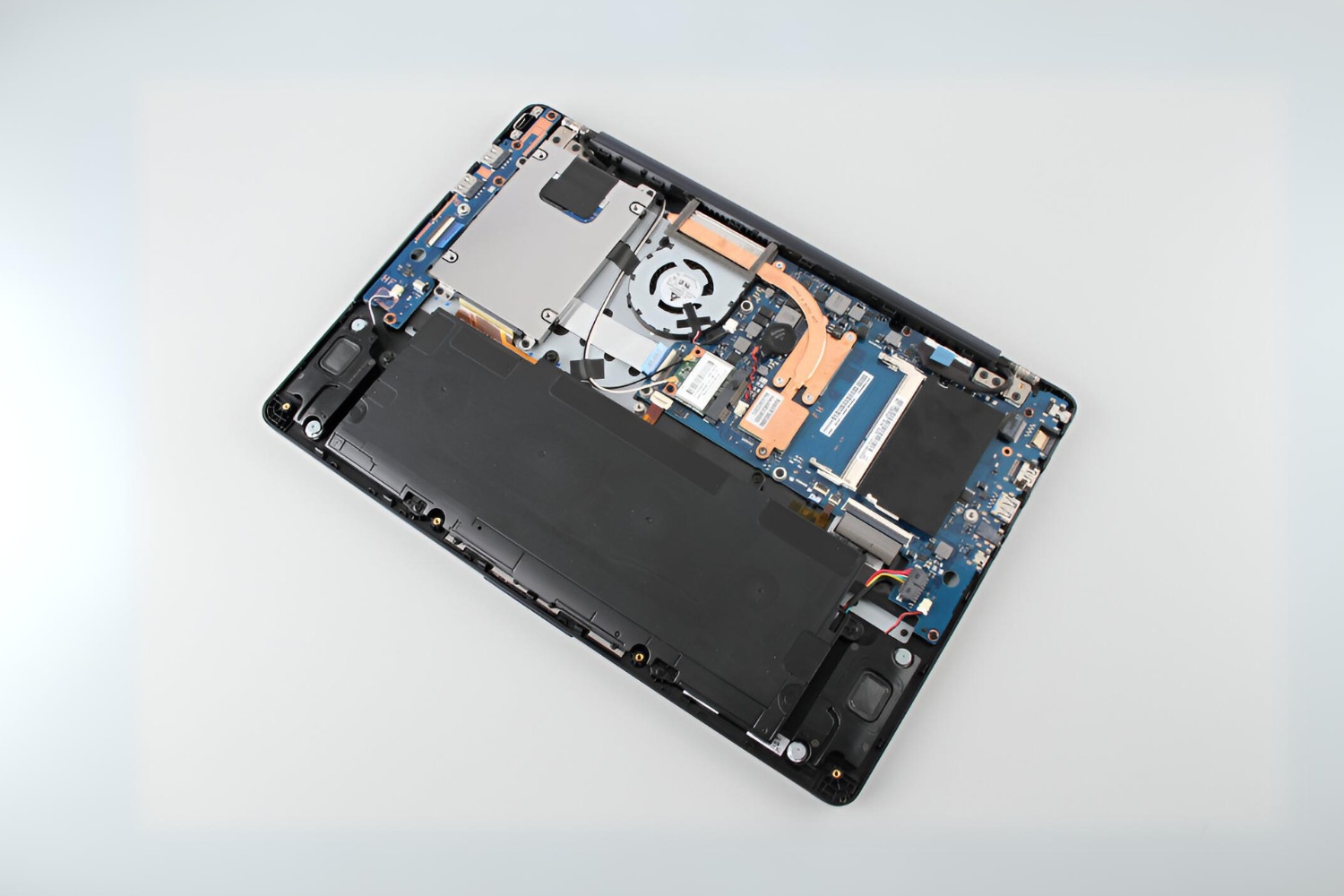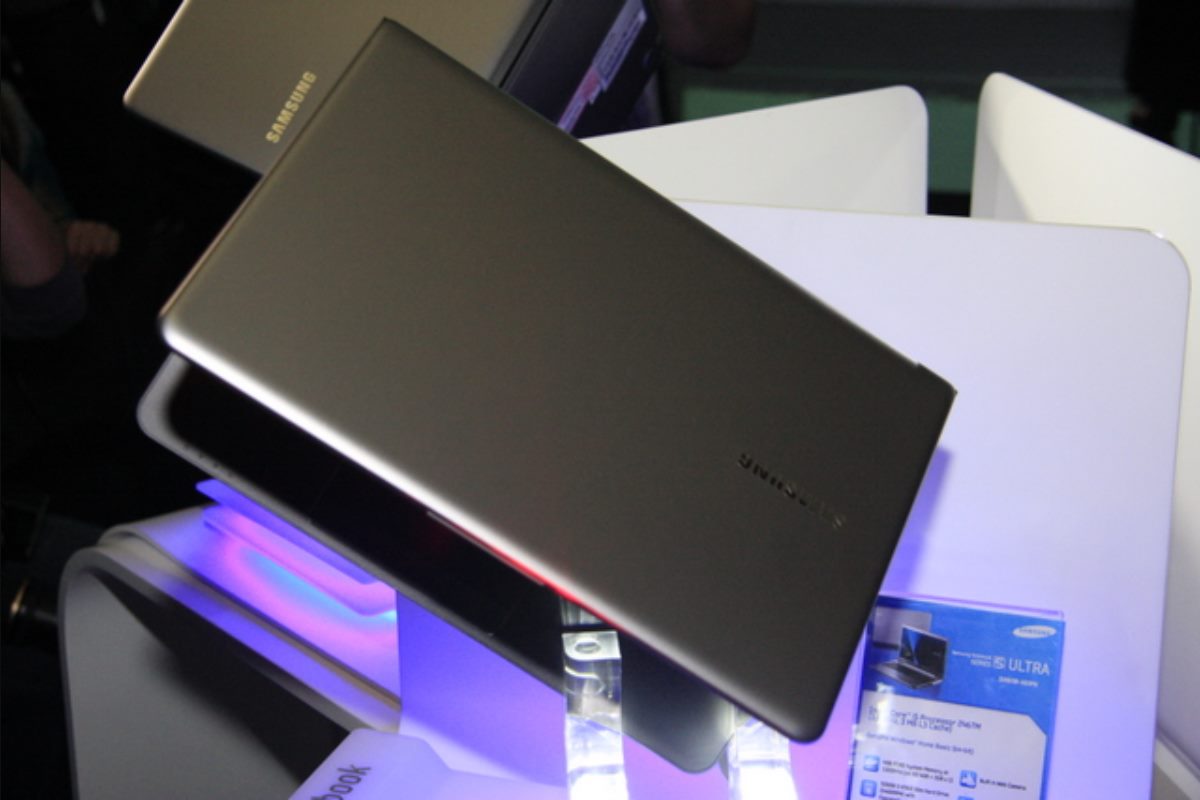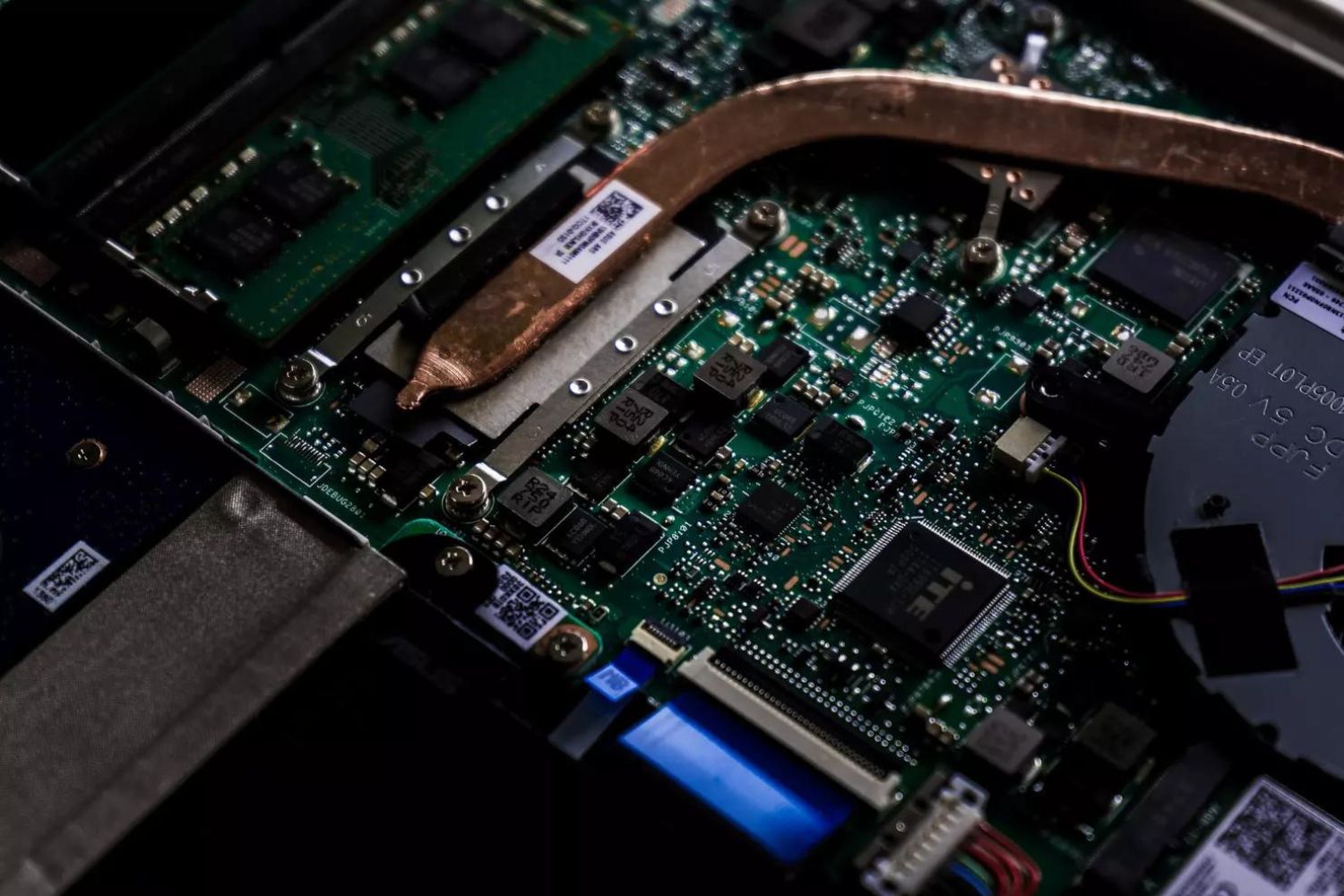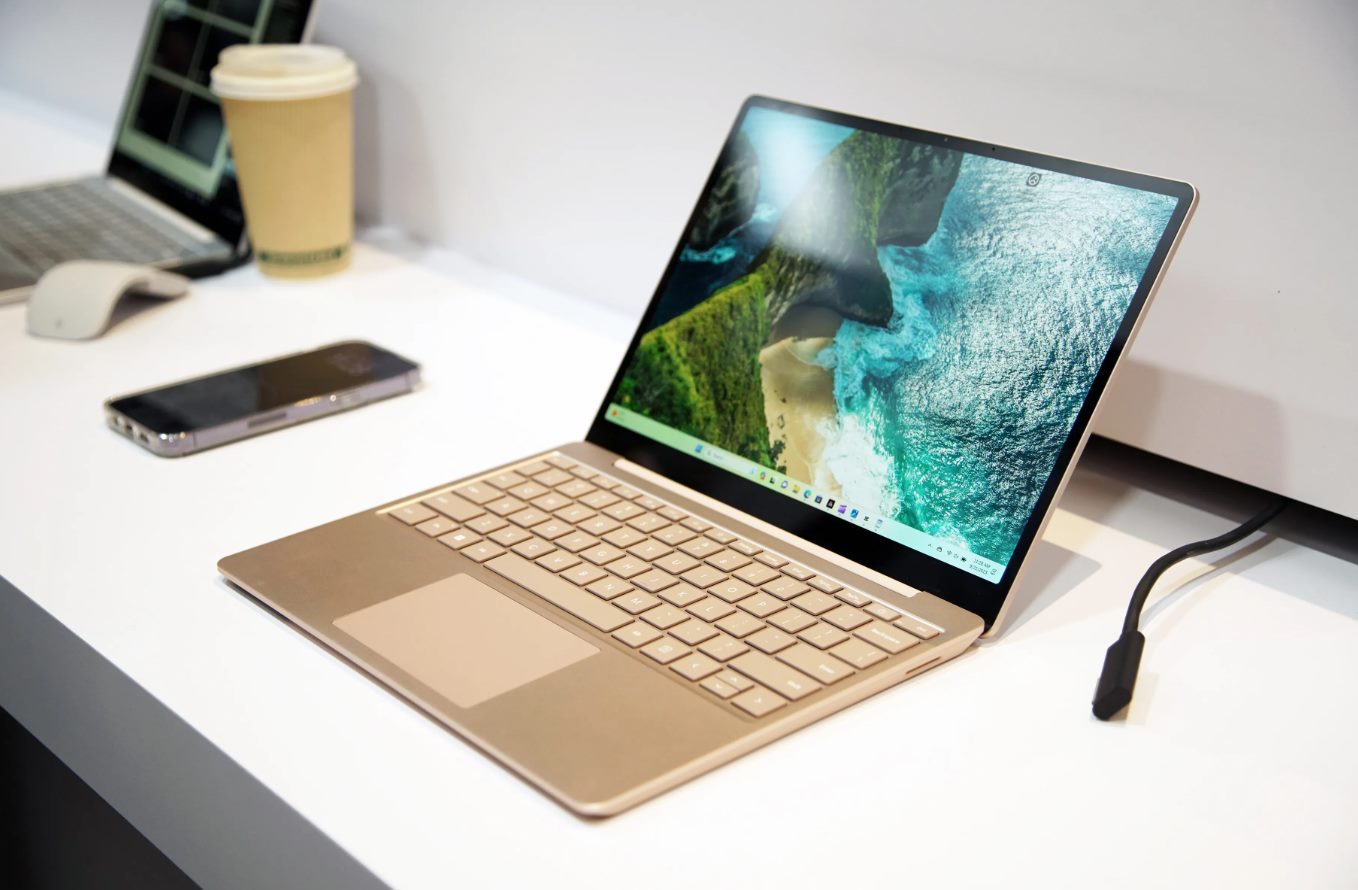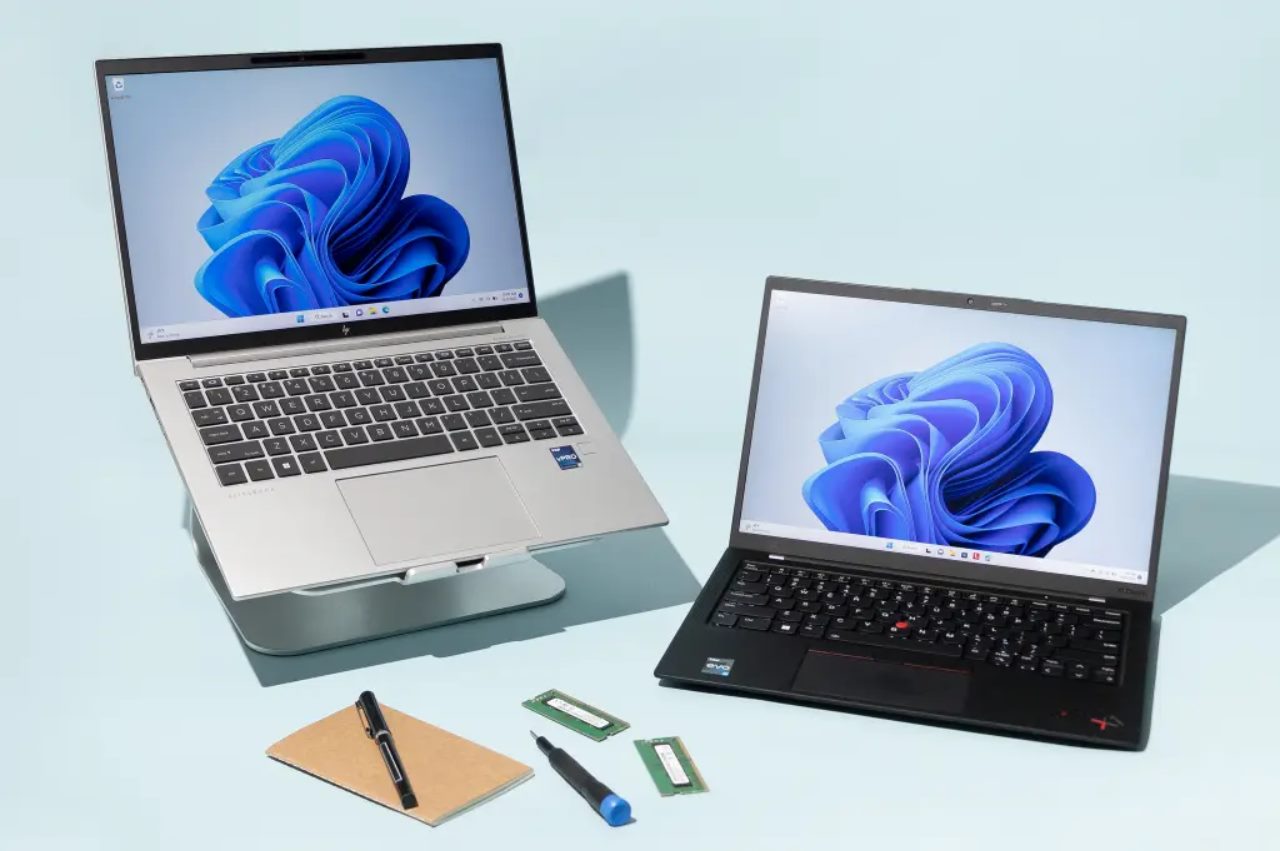Introduction
Welcome to our guide on how to reset CMOS on Samsung Ultrabook 530U. The CMOS (Complementary Metal-Oxide-Semiconductor) is an essential component of your computer’s motherboard that stores important system configuration data, including date and time settings, hardware settings, and BIOS (Basic Input/Output System) parameters.
At times, you may encounter issues with your Samsung Ultrabook 530U that require resetting the CMOS. These issues could range from unstable system performance, BIOS errors, forgotten BIOS passwords, or even booting problems. Resetting the CMOS can often resolve these kinds of issues and restore your system to its default state.
However, it is crucial to note that resetting the CMOS should be considered as a last resort, as it may result in the loss of any personalized BIOS settings or configurations you have made. Therefore, it is important to back up any crucial data or settings before proceeding with a CMOS reset.
In this guide, we will walk you through the step-by-step process of resetting the CMOS on your Samsung Ultrabook 530U. We will also discuss some precautions you should take and provide optional steps for restoring the BIOS settings to their default values.
Before we begin, please ensure that you have a basic understanding of computer hardware and are comfortable working with electronic components. If you are uncertain about any of the steps or feel uncomfortable performing them yourself, we recommend seeking assistance from a professional technician.
Now, let’s dive into the process of resetting the CMOS on your Samsung Ultrabook 530U, so you can resolve any issues you may be experiencing and get your device back up and running smoothly.
What is CMOS?
CMOS, which stands for Complementary Metal-Oxide-Semiconductor, is a crucial component of your computer’s motherboard. It serves as a small amount of low-power memory that stores essential system configuration data and settings, including date and time, hardware settings, and BIOS parameters.
The CMOS chip, also known as the CMOS battery or CMOS RAM, retains this information even when your computer is powered off or disconnected from a power source. This allows your system to retain its settings and configurations, ensuring a smooth boot-up process and proper functioning of your hardware.
The CMOS chip uses a small lithium battery to maintain its stored data. This battery typically has a lifespan of several years, but it will eventually require replacement as it loses its charge over time. When the CMOS battery is depleted or malfunctioning, it can lead to issues such as incorrect system date and time, BIOS errors, or even difficulties booting up your computer.
It is also worth noting that the CMOS contains the BIOS (Basic Input/Output System), which is a firmware that initializes and controls the hardware components of your computer during the boot-up process. The BIOS contains essential instructions and settings that allow your operating system to communicate effectively with the hardware.
Overall, the CMOS is a vital component that plays a crucial role in maintaining system stability and ensuring the proper functioning of your computer. Being aware of its function and how to reset it can be helpful in troubleshooting certain issues and resolving them effectively.
Why would you need to reset CMOS?
There are several situations where you may need to reset the CMOS on your Samsung Ultrabook 530U. Resetting the CMOS can help resolve various issues you might encounter with your computer, including:
- System Stability: If you’re experiencing frequent crashes, freezes, or other stability issues with your Ultrabook, resetting the CMOS can often help restore stability. It clears any corrupted or incorrect settings that may be causing the problem.
- BIOS Errors: If you encounter error messages during the boot-up process or while accessing the BIOS settings, resetting the CMOS can help eliminate these errors. It resets the BIOS to its default state, resolving any problematic configurations that may have caused the errors.
- Forgotten BIOS Password: In case you have forgotten your BIOS password and are unable to access the system settings, resetting the CMOS can help bypass the password and regain access to the BIOS. It resets the BIOS configuration, including the password, returning it to the default settings.
- Boot Issues: If your computer fails to boot or gets stuck in a boot loop, a CMOS reset can often resolve the issue. It clears any incorrect boot configurations that may be preventing the system from starting properly.
- Hardware Detection: If you’ve recently installed new hardware components and your Ultrabook is not detecting them, resetting the CMOS can help in some cases. It forces the system to re-detect the hardware, ensuring proper recognition and functionality.
Before proceeding with a CMOS reset, it is essential to note that it will revert the BIOS settings back to their default values. This means that any personalized settings or configurations you have made will be lost. Therefore, it’s crucial to back up any important data or make a note of your custom settings before performing a CMOS reset.
By performing a CMOS reset, you can often resolve various issues with your Samsung Ultrabook 530U, leading to improved system stability, eliminated BIOS errors, and restored functionality.
Precautions before resetting CMOS
Before proceeding with resetting the CMOS on your Samsung Ultrabook 530U, it’s important to take certain precautions to ensure a smooth and safe process. These precautions will help prevent any potential damage to your device and ensure that you can recover your system in case of any problems. Here are some essential precautions to keep in mind:
- Back up your data: Before performing a CMOS reset, it’s always recommended to back up any important data stored on your Ultrabook. This includes documents, photos, videos, and any other files that you don’t want to risk losing. While a CMOS reset shouldn’t affect your data directly, it’s always better to be safe and have a backup in case of any unforeseen issues.
- Power off your Ultrabook: Make sure to power off your Samsung Ultrabook 530U completely before attempting to reset the CMOS. This will prevent any electrical damage or short circuits while working with the internal components.
- Disconnect all power sources: Remove any power source connected to your Ultrabook, including the adapter and any external batteries. This will ensure that there is no electrical current running through the system, minimizing the risk of accidental damage.
- Ground yourself: To prevent electrostatic discharge (ESD) from damaging sensitive electronic components, ground yourself before touching any internal parts of your Ultrabook. You can achieve this by touching a grounded metal object or wearing an anti-static wristband.
- Refer to the user manual: It’s always a good idea to consult your Samsung Ultrabook 530U’s user manual or documentation for specific instructions regarding CMOS reset. Different models may have slight variations in the location of the CMOS battery or the process of removing it.
- Take note of your BIOS settings: Before resetting the CMOS, it’s important to make a note of any custom BIOS settings you have made. This includes settings related to boot order, overclocking, device configurations, and any other personalized configurations. This will make it easier for you to reconfigure the settings after the CMOS reset.
By following these precautions, you can minimize the risk of damage and ensure a successful CMOS reset process. Taking the time to back up your data, power off the Ultrabook, disconnect power sources, ground yourself, refer to the user manual, and take note of BIOS settings will help you navigate the CMOS reset process with confidence.
Step 1: Power off your Samsung Ultrabook 530U
The first step in resetting the CMOS on your Samsung Ultrabook 530U is to ensure that the device is completely powered off. This will prevent any potential electrical damage and make it safe to work on the internal components. Here’s how to power off your Ultrabook:
- Save any open files or applications that you are currently working on.
- Close all running programs to ensure a smooth shutdown process.
- If your Ultrabook is connected to a power source using the adapter, unplug it from the power outlet. This will disconnect the device from the mains electricity.
- If you are using an external battery, remove it from the Ultrabook to disconnect the power supply completely.
- Make sure that there are no USB devices or other peripherals connected to the Ultrabook.
- Once all power sources are disconnected, locate the power button on your Ultrabook’s keyboard or chassis.
- Press and hold down the power button for a few seconds until the device completely powers off.
- Wait for a few seconds to ensure that any residual power dissipates from the system.
By following these steps, you can safely power off your Samsung Ultrabook 530U in preparation for the CMOS reset process. Ensure that the device is completely powered off before proceeding to the next steps.
Step 2: Locate the CMOS battery
After powering off your Samsung Ultrabook 530U, the next step is to locate the CMOS battery. The CMOS battery is a small, round-shaped component that is responsible for storing the CMOS settings and keeping the system configuration data intact. Here’s how to locate the CMOS battery in your Ultrabook:
- Flip your Ultrabook upside down to expose the bottom side.
- Look for a removable panel or cover on the bottom of the device. This panel is usually secured with screws or clips.
- Use a screwdriver or your fingers to remove the screws or release the clips that hold the panel in place.
- Gently lift or slide off the panel to reveal the internal components of your Ultrabook.
- Look for a small, coin-shaped battery on the motherboard. The CMOS battery is often silver or gold in color and is about the size of a quarter or a nickel.
- Note the orientation and position of the CMOS battery, as you will need to reconnect it in the same way during the reassembly process.
It’s important to exercise caution when accessing the internal components of your Ultrabook. Avoid applying excessive force or touching any other components unless necessary. If you are unsure about identifying the CMOS battery, refer to the user manual or consult the manufacturer’s support documentation for your specific model.
Once you have located the CMOS battery, you are ready to proceed to the next step of the CMOS reset process.
Step 3: Disconnect and remove the CMOS battery
Now that you have located the CMOS battery in your Samsung Ultrabook 530U, the next step is to disconnect and remove the battery from its socket. Removing the CMOS battery will clear the stored configurations and allow the CMOS to reset. Here’s how to disconnect and remove the CMOS battery:
- Ensure that you have powered off your Ultrabook and have the necessary tools, such as a small Phillips screwdriver, if needed.
- Gently observe the CMOS battery and identify any retaining mechanisms securing it in place. These mechanisms can vary depending on the model of your Ultrabook.
- If there are any retaining clips or latches holding the battery in place, carefully push or slide them to release the battery. If the battery is held by screws, use a screwdriver to remove them.
- Once any retaining mechanisms are disengaged, locate the connector or socket that the CMOS battery is attached to.
- Using your fingers or a non-conductive tool, gently push or lift the battery connector away from the socket to disconnect it from the motherboard.
- Bear in mind that some CMOS batteries may be soldered directly to the motherboard in certain Ultrabook models. In such cases, it is advisable to seek professional assistance or proceed with caution to avoid causing damage to the device.
- After disconnecting the battery, carefully lift it out of its position and set it aside.
Be mindful of the battery’s orientation and try not to twist or pry it forcefully to prevent any damage. If you encounter any difficulties removing the battery or are unsure about the process, consult the user manual or seek assistance from a professional technician.
With the CMOS battery successfully disconnected and removed, you are now prepared to proceed to the next step of the CMOS reset process.
Step 4: Wait for a few minutes
After disconnecting and removing the CMOS battery from your Samsung Ultrabook 530U, it is essential to wait for a few minutes before proceeding to the next step. This waiting period allows the residual charge to dissipate and ensures that the CMOS settings are completely reset. Here’s what you need to do:
- Set the CMOS battery aside in a safe place, away from any static or magnetic interference.
- During this waiting period, it is advisable to keep the Ultrabook in a safe and static-free environment to prevent any potential damage.
- Waiting for a few minutes gives enough time for the CMOS settings to reset to their default values. This clears any previous configurations or errors that may have been causing issues.
- The exact duration of the waiting period can vary, but a general recommendation is to wait for at least 5 minutes.
- While waiting, you can take this time to review or make note of any BIOS settings you wish to reconfigure after reconnecting the CMOS battery.
- If you are unsure about the waiting time or have specific instructions provided by the manufacturer, it’s always best to follow those guidelines.
By patiently waiting for a few minutes, you ensure that the CMOS settings are cleared and ready for the next step of the CMOS reset process. Take this opportunity to prepare for the upcoming steps and double-check any BIOS settings you need to restore or modify.
Step 5: Reconnect the CMOS battery
After waiting for a few minutes, it’s time to reconnect the CMOS battery to your Samsung Ultrabook 530U. Reconnecting the CMOS battery will restore power to the CMOS chip and allow it to save new configuration settings. Here’s how to reconnect the CMOS battery:
- Retrieve the CMOS battery that you had set aside in a safe location.
- Ensure that the battery is clean and free from any dirt or debris. Gently wipe the battery, if necessary, using a soft, lint-free cloth.
- Position the CMOS battery so that the connector aligns with the socket on the motherboard.
- Using your fingers or a non-conductive tool, carefully insert the CMOS battery connector into the corresponding socket on the motherboard. Ensure that it is firmly seated and properly aligned.
- If there were any retaining clips or latches that held the battery in place, secure them back into their original position. If screws were used to secure the battery, carefully reattach them.
- Double-check the orientation of the battery, making sure the positive (+) and negative (-) terminals are correctly aligned with the socket.
- Once you are confident that the CMOS battery is securely reconnected, you can proceed to the next step of the CMOS reset process.
It is important to handle the CMOS battery with care and avoid applying excessive force when reconnecting it. Ensure that the battery is properly aligned before pushing it into the socket. Take your time and double-check the orientation to prevent any damage to the battery or the motherboard.
With the CMOS battery successfully reconnected, you are now ready to move on to the next step of the CMOS reset process.
Step 6: Power on your Samsung Ultrabook 530U
Now that you have reconnected the CMOS battery, it’s time to power on your Samsung Ultrabook 530U and allow the new CMOS settings to take effect. Here’s how to power on your Ultrabook:
- Make sure that the CMOS battery is properly connected and secured in its socket.
- Take a moment to review any notes or settings you made note of before disconnecting the CMOS battery. This will help you restore or modify any necessary BIOS settings.
- Reattach or close any panels or covers you removed in the earlier steps to access the CMOS battery. Ensure that they are securely fastened.
- If your Ultrabook was connected to a power source using the adapter, plug it back into a power outlet. If you were using an external battery, reinstall it into the Ultrabook.
- Press the power button on your Ultrabook’s keyboard or chassis to turn on the device.
- Observe the screen for any display or error messages during the boot-up process.
- If your Ultrabook boots up successfully and you can access the operating system without any issues, it indicates a successful CMOS reset.
- If you encounter any errors or have difficulty accessing the operating system, you may need to further investigate or consult the user manual for troubleshooting steps.
Restarting your Ultrabook after reconnecting the CMOS battery allows the system to recognize the new CMOS settings. It’s important to pay attention to any error messages or unusual behavior during the boot-up process, as they may indicate further issues that need to be addressed.
If your Ultrabook starts up normally and you can access the operating system without any problems, you have successfully completed the CMOS reset process. However, if you continue to experience issues, it may be necessary to explore other troubleshooting options or seek professional assistance.
Step 7: Reset BIOS settings to default (optional)
After powering on your Samsung Ultrabook 530U and completing the CMOS reset process, you have the option to reset the BIOS settings to their default values. This step is not mandatory, but it can be helpful if you want to ensure a clean slate and eliminate any potential conflicts or incorrect configurations. Here’s how to reset the BIOS settings to their default values:
- Access the BIOS settings by pressing the appropriate key during the boot-up process. The specific key varies depending on the manufacturer, but it is commonly the Delete, F2, or F10 key.
- Navigate to the “Restore Defaults” or “Load Optimized Defaults” option within the BIOS settings. The exact location and wording may vary, so refer to your Ultrabook’s user manual or on-screen instructions for guidance.
- Select the “Restore Defaults” or “Load Optimized Defaults” option and confirm your selection.
- Save your changes and exit the BIOS settings. Typically, this is done by selecting the “Save and Exit” or “Exit Setup” option.
- Your Ultrabook will restart, and the BIOS settings will be restored to their default values.
- After the restart, you may need to reconfigure certain BIOS settings, such as the boot order or device settings, according to your preferences.
- If you had made notes of your previous BIOS settings, you can refer to them during this process to help you restore any custom configurations.
- Test your Ultrabook to ensure that it is functioning correctly with the default BIOS settings.
Resetting the BIOS settings to their default values can help resolve any conflicts or issues that may have been caused by incorrect configurations. It provides a fresh starting point, allowing you to reconfigure the BIOS settings according to your needs.
Remember, this step is optional, and you can choose to skip it if you prefer to keep your custom BIOS settings intact. However, if you continue to experience problems even after the CMOS reset, resetting the BIOS settings to default can be a valuable troubleshooting step.
Conclusion
Resetting the CMOS on your Samsung Ultrabook 530U can be a valuable troubleshooting step to resolve various issues such as system instability, BIOS errors, forgotten passwords, and boot problems. It allows you to clear any corrupted or incorrect configurations and restore the default settings to bring your device back to a stable and functional state.
Throughout this guide, we discussed the importance of understanding what the CMOS is and why you might need to reset it. We also highlighted the precautions you should take before performing a CMOS reset to ensure a safe and successful process.
The step-by-step instructions provided you with a clear guide on how to power off your Ultrabook, locate and disconnect the CMOS battery, wait for a few minutes, reconnect the CMOS battery, and power on your Ultrabook. Additionally, we outlined an optional step to reset the BIOS settings to their default values for a clean slate.
Remember, while resetting the CMOS can often resolve various issues, it should be considered a last resort, and you should always back up important data and make note of any custom BIOS settings beforehand. If you are uncertain or uncomfortable with performing the CMOS reset yourself, it is advisable to seek assistance from a professional technician.
By following this guide and carefully completing the steps outlined, you can effectively reset the CMOS on your Samsung Ultrabook 530U and restore its functionality. However, if you continue to encounter problems or the issues persist, it may be necessary to seek further assistance from technical support or Samsung’s customer service.
We hope this guide has been helpful in assisting you with resetting the CMOS on your Samsung Ultrabook 530U. Wishing you the best of luck in resolving any issues and getting your Ultrabook back to optimal performance!







